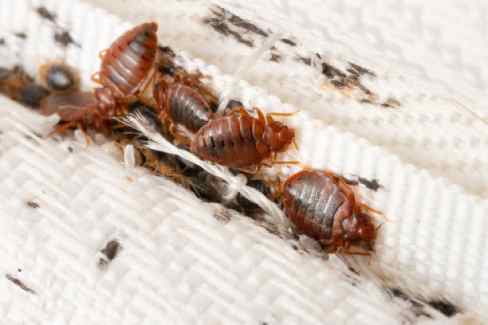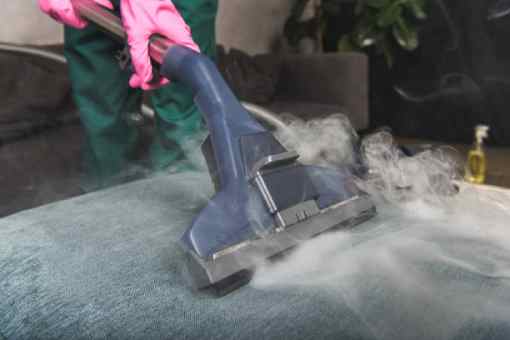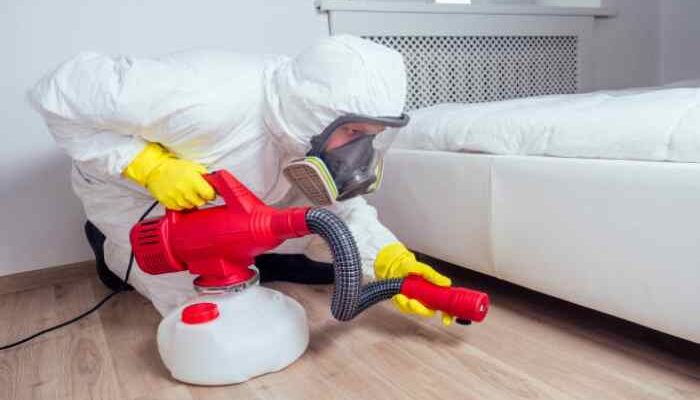Many people try to treat bed bugs themselves, but they rarely succeed. This is because the best way to fight them is with pesticides.
The first step in a successful treatment is to inspect the severity and locations of the infestation. This includes checking the tufts of your mattress, disassembling furniture and inspecting cracks and crevices.
Insecticides

A professionnel desinsectisation punaise de lit may use insecticides in the form of sprays, dusts, or foggers. Foggers work by releasing odorless vapors that build up in an airtight container over several days and kill the bugs. They typically contain dichlorvos (DDVP) or permethrin.
Dusts are used to treat crevices and other inaccessible areas where bed bugs hide. They are typically sprayed in the spaces between baseboards, electrical outlets, and hanging picture frames. These dusts also offer a longer-lasting residual than other treatments.
Using cold treatments sidesteps the chemical resistance issue, but it isn’t an effective solution for most infestations. The extreme environmental change of cold treatment allows bed bugs to adapt more quickly, and it is difficult for a professional to get temperatures down to minus 15 degrees Fahrenheit consistently enough to eradicate the pests. It also requires extensive preparation, including removing many items from infested rooms. This can create a lot of stress for homeowners.
Vacuuming
Bed bugs are excellent hitchhikers, and you could bring them home in your purse, a suitcase, or on the back of someone riding in your car. Once they’re in your home, they multiply, often undetected.
One of the best ways to contain an infestation is to vacuum your entire bedroom, as well as nightstands, dresser drawers, closets, and other areas. Pay special attention to nooks and crannies where bed bugs love to hide, such as the tufts of your mattress or seams on your furniture. When you’re finished, seal the vacuum bag and discard it outdoors.
Many homeowners choose to combine heat treatment with a chemical application. A trained exterminator will know how to carefully integrate these treatments, because it’s critical to killing all stages of the pest. Bed bug elimination requires a multi-step process, including thorough inspections and the use of preventive products like mattress encasements. This will keep the pests from spreading to other parts of your home or returning after a successful treatment.
Steam Cleaning

Bed bugs can’t survive in extreme heat, so your NYC bed bug exterminator might use a steamer on the mattress and other furniture pieces to kill any that are hiding in crevices. The treatment requires the room to be sealed and any heat-sensitive items removed from the area.
The exterminator can also spray pesticide on the mattress and other furniture items to kill any remaining bed bugs or eggs that may be present. However, this method isn’t ideal for homeowners with pets or young children who might react to the chemicals.
It’s important to understand that even after a professional treatment, bed bugs can still be lurking in hard-to-reach places, such as underneath carpets, behind electrical outlets, or in cracks and crevices. Regular and thorough inspections and prompt re-treatment are essential to completely eliminating this pesky pest. In addition, encasing your mattress and box spring in a bed bug-proof cover will help prevent future infestations.
Pesticide Spraying
Bed bugs hide in small crevices that can be difficult for a homeowner to reach. This is why regular inspections and re-treatments are key to eliminating them.
If your bed bug problem isn’t severe, you might be able to use conventional pesticide treatments. The exterminator will spray the mattress, box spring, and bed frame with a pesticide that will kill the bugs and their eggs.
This is a safer method of treatment than foggers, which can also be dangerous if used incorrectly. It isn’t ideal for homes with children, pets, or elderly family members, though.
Summary:
After the pesticide spraying, the exterminator will seal cracks and crevices with silicon caulk. This helps prevent the re-infestation of beds, as well as other areas of your home, and keeps you safe from future infestations. They might also recommend encasing your mattress and box spring in a protective cover to further prevent bed bugs from finding their way inside.

Jerry Martinez is a professional artist. He lives in California with his family. Throughout his life, he has always been captivated by images. Naturally, he was drawn to art. So he opted to take his Bachelors Degree in Fine Arts from Otis College of Art and Design. After completing his degree, He concentrated even more into his art practice. He is a father of three children, ranging in age from 3 to 12 years old. They love outdoors activities; biking, camping, walking and playing football. Jerry Martinez is a music lover and love to listen to metallic songs.






